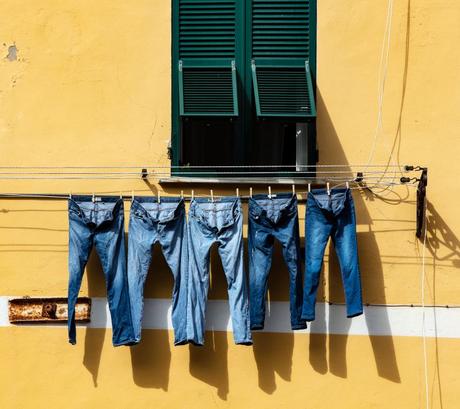Retail therapy is an excellent way of destressing after a long day at work. It takes your mind off daytime hassles and allows you to play virtual dress-up. Choosing the perfect new party outfit by scrolling through page after page of outfit choices can be therapeutic, but it can also have adverse effects on the world long after you have hit the ‘buy now’ button. Our fashion habits often have severe environmental and social consequences, and this isn’t set to improve any time soon, either. By 2030, the fashion industry is projected to produce 102 million tonnes of clothes and shoes. So, continue reading to find out four of the most destructive fashion trends damaging our planet and what you can do to avoid them.
- Jeans

Denim jeans are one of the most popular items of clothing worldwide. Nearly everyone owns at least one pair of jeans, and many people own multiple. Jeans come in a multitude of washes and styles, including bootcut, skinny, straight leg, stonewashed, dark denim, light denim, rhinestone denim etc. (the list is endless!), and with new designs and styles coming out every season, there always seems to be a reason to purchase more.
While our favorite figure-hugging pairs of blue jeans may seem like an innocuous enough item, the truth is that a lot of pollution has been involved in getting them to us. The dying process not only involves vast amounts of water, but it also involves the contamination of water. Factories often dump out contaminated water into local rivers and lakes, which means that local people (usually in developing countries) cannot get access to clean water and are more at risk of health issues.
Denim is made from cotton, and cotton is one of the thirstiest plants out there! In fact, for just one pair of blue jeans, the average amount of water needed to grow, dye and process the cotton is a whopping 500-1800 gallons! In a world where 1 in 10 people don’t have access to clean drinking water, this is something to take very seriously before you purchase a new pair of jeans.
2. Leather
Demand for leather is obviously damaging for the animals involved in the meat production and leather industry, but there is also a lot of environmental and social damage caused by the manufacturing of leather. Leather tanning involves at least 30 different types of harmful chemicals. Lack of safety regulations mean that workers exposed to these chemicals on a daily basis are more at risk of developing respiratory diseases. In fact, the whole community is more at risk of chronic illness, since tanneries typically flush their contaminated water into the local water supply.
3. Fast fashion
The fashion industry used to operate on a system of two main collections per year: Spring/Summer and Autumn/Winter. Now, due to growing consumer demand and a desire to make more money, many clothing retailers release new collections of clothing monthly or even fortnightly! With trends coming and going in the blink of an eye, what is the height of fashion this week will be found in the bargain bin next week. With ever-changing styles, more and more clothing is heading to landfill sites every year. In the US alone, over 15 million tonnes of textile and fabric are discarded every year. So, do yourself and the world a favour and carefully consider whether you really need to add a new item to your collection just because a celebrity is saying it’s the must-have item of the week.
4. Synthetic Fibres
While cotton production involves the use of lots of water, synthetic materials such as polyester are potentially even more damaging to the environment. This is because polyester is a petroleum-based product, which involves the refining of oil to create fabric. As we all know, this refining process requires a lot of energy which leads to high carbon emissions. You may be wondering what you are supposed to do, if both natural (cotton) and synthetic (polyester) fibres are both damaging the planet. Well, your best bet is to choose natural materials which are organically produced and come with some kind of Fair Trade certification. This ensures that less harmful pesticides were used in the manufacturing process and that workers are earning a fair wage.
